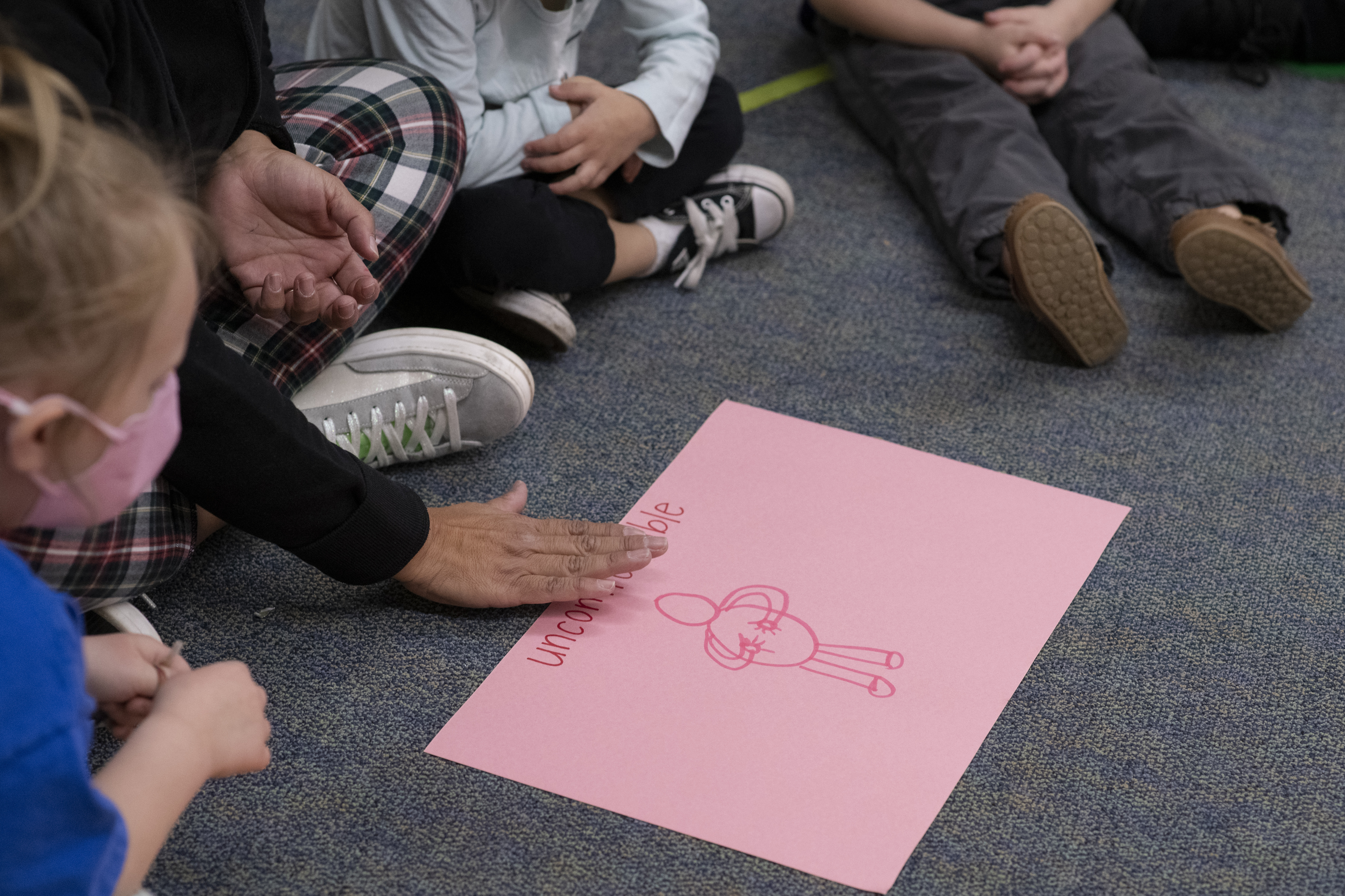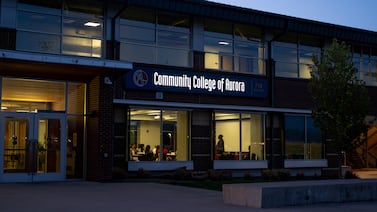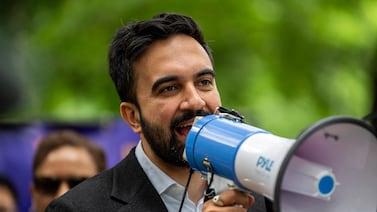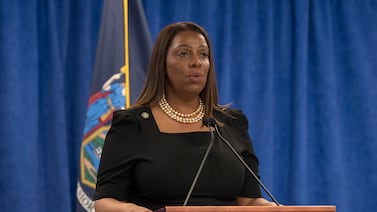If you or someone you know is considering self-harm, please dial 988 for the national Suicide & Crisis Lifeline.
As New York City continues to grapple with youth mental health challenges, Mayor Eric Adams laid out a sweeping vision on Thursday to help schools better recognize student mental health needs and create a safety net for kids in crisis.
The needs are high: About a fifth of children ages 3 to 13 had one or more mental, emotional, developmental or behavioral problems in 2021, according to health department data provided in the mayor’s new plan, called Care, Community, Action: A Mental Health Plan for New York City.
Rates of suicidal ideation jumped to nearly 16% from about 12% over the past decade, with more than 9% of the city’s high school students reporting they attempted suicide over the course of 2021.
“We’ve all seen the isolation and trauma that children have experienced over the past several years, along with the results: disappearing into screens, behavioral issues, and even suicide,” Adams said while revealing the plan.
Addressing the mental health needs of young people and their families was one of the three major focal points of Adams’ blueprint. The plan calls for several things, including opening more school-based mental health clinics, creating suicide prevention trainings for educators, and assessing the impacts of social media as possible “toxic exposure.”
Though most of the ideas lacked details in terms of timeline and cost, the mayor did add a price tag of $12 million for a previously announced telehealth hotline for high school students, which the city says will be the largest of its kind in the nation.
City officials said they will track certain data points to determine whether the plan is working, including the number of contacts made by or on behalf of youth through NYC Well (the city’s free, confidential support, crisis intervention, and information and referral service), and the percent of young people reporting feelings of sadness and hopelessness.
Here are four highlights from the plan that relates to youth and schools:
City taps telehealth to fill treatment gaps
The mayor initially announced in January that the city would launch a telehealth program for high schoolers, though has not said when the program will launch and how students can access it.
Officials said Thursday they are still working out details.
“Telehealth can improve access to care for young people and their families who cannot easily get around or meet the strict time or expenses of traveling to in-person appointments, especially when mental health provider locations might be far away from the child’s home,” the mayor’s plan stated. “In addition, many youth feel more comfortable using technology to connect, and technology offers new ways to stay connected outside of traditional therapy sessions.”
Other cities are leaning on telehealth for young people, as well, including Los Angeles.
Experts previously shared cautious optimism with Chalkbeat about the plan when Adams first announced it, while also raising questions about how it would work, including whether school staff will be monitoring sessions and get involved if a student’s needs are more serious.
School-based mental health clinics to expand
As of the 2020-21 school year, 162 schools had on-site mental health clinics, while another 238 had health clinics that offered some mental health services, according to a 2022 report from New York State Comptroller Thomas DiNapoli.
The mayor’s plan calls on expanding mental health clinics that exist inside of school buildings through a partnership with the city’s education department, health department, the state’s Office of Mental Health and community providers.
Asked how many more clinics the city wants to open and an estimated cost, a health department spokesperson said these “are active and ongoing discussions.”
Creating school-based mental health clinics, however, can be complicated, said Kevin Dahill-Fuchel, executive director of Counseling in Schools, which partners with schools to offer counseling services. It involves getting approvals from the state, finding space inside of schools that would be eligible for such clinics, and setting up a financial structure to get reimbursed by Medicaid for the services, he said.
An easier lift, he suggested, might be to get more community organizations like his to offer services in schools. Those groups often operate with grants, thus cutting out complicated funding issues.
A push to train school staffers on suicide prevention
Adams wants schools staff to be trained on suicide prevention so that they can “respond appropriately to the needs of students,” the plan said.
Dahill-Fuchel praised such training, noting they could potentially help more students realize they need help.
“I think one of the things that is really gonna be useful is this idea of a public health approach to suicide prevention, which at its core really means demystifying it,” Dahill-Fuchel said. “It tends to be a word that, around children, people don’t like to use and that becomes part of the problem.”
City officials also plan to launch a program, called “Caring Transitions,” that would focus on preventing youth ages 5-17 in the Queens and Bronx who have been to the hospital for a suicide attempt from re-entering. Teams would be responsible for connecting these young people to follow-up services in their neighborhoods as well as “additional supports” for up to three months after they leave the hospital.
The plan also says it will launch a suicide prevention pilot program for young people of color ages 5 to 24. The goal is to bolster interventions that more effectively meet the needs of Black, Asian American, and Latino youth who face suicide-related risk “that includes or is intensified by racial inequities,” the plan said. The plan did not specify what those interventions might look like.
An attempt to address cyberbullying
Concerned with social media’s impact on youth mental health, the Adams administration plans to create a task force to study the issue and develop a public health approach to reduce exposure to harmful online content.
The plan noted that “there are few rules or regulations” on how social media companies interact with young people.
“We’re also going to examine the potential risks of social media to our children’s mental health and work to make sure tech companies are required to keep online spaces safe for our kids,” Adams said during his speech.
The group would include youth and families, according to the plan. It didn’t specify when the group would launch.
Federal officials have called for more rigorous research on how social media impacts youth mental health. In a 2021 advisory released by the U.S. Surgeon General Vivek Murthy, officials note that while several studies have linked worsening mental health to online platforms, other researchers have argued that there is no clear relation between the two.
Seattle Public Schools recently filed a lawsuit against leading social media companies, alleging that students and schools were harmed by worsened mental health that stemmed from social media.
The surgeon general’s advisory also called for technology companies to make sure they were fostering “safe digital environments” for their youngest users.
Some of the pressure seems to be working: Tik Tok announced earlier this week it will set the default screen time limit to 60 minutes for users under 18, though kids can continue using the app with a passcode.
Reema Amin is a reporter covering New York City schools with a focus on state policy and English language learners. Contact Reema at ramin@chalkbeat.org.
Amy Zimmer is the bureau chief for Chalkbeat New York. Contact Amy at azimmer@chalkbeat.org.






